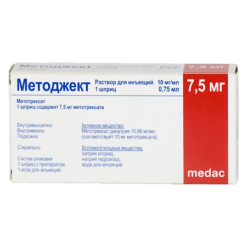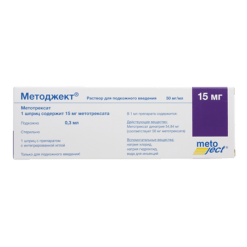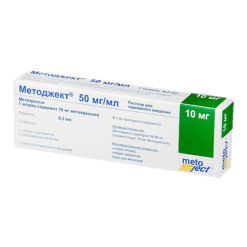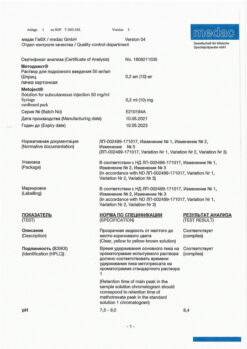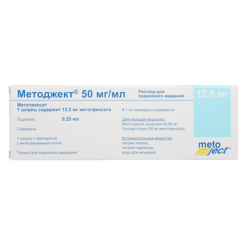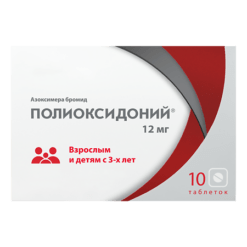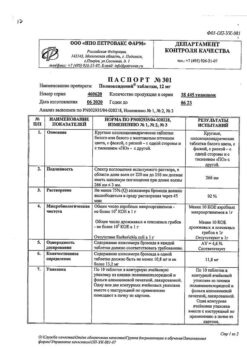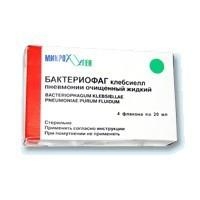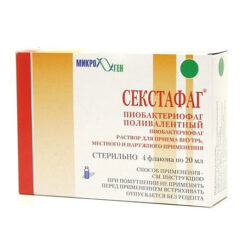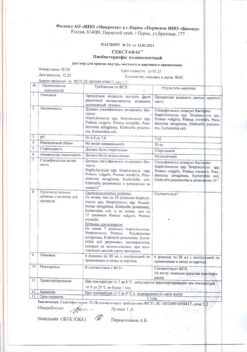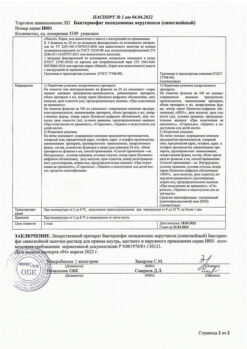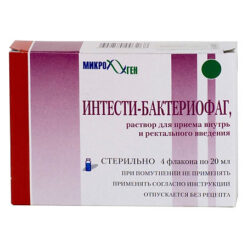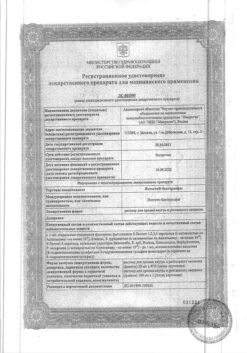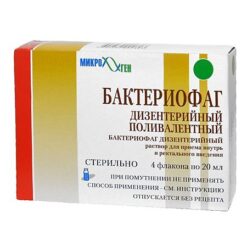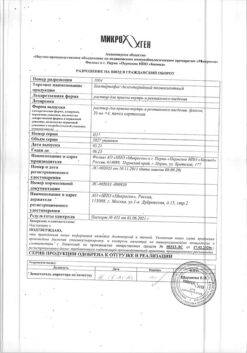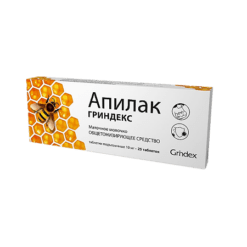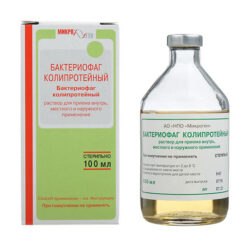No products in the cart.
Metoject, 50 mg/ml 0.5 ml
€1.00
Out of stock
(E-mail when Stock is available)
Description
Pharmacodynamics
Antitumor, cytostatic agent of the group of antimetabolites – analogues of folic acid.
Inhibits dihydrofolate reductase, involved in the reduction of dihydrofolic acid to tetrahydrofolic acid (carrier of carbon fragments necessary for the synthesis of purine nucleotides and their derivatives).
Inhibits synthesis, DNA repair and cellular mitosis (in S-phase). Tissues with high cell proliferation are particularly sensitive to the action of methotrexate: tumor tissue, bone marrow, mucosal epithelial cells, embryonic cells.
. The mechanism of action in rheumatoid arthritis is connected with the immunomodulatory and anti-inflammatory action of the preparation and is caused by the induction of apoptosis of the rapidly proliferating cells (activated T-lymphocytes, fibroblasts, synoviocytes), inhibition of anti-inflammatory cytokine synthesis (interleukin (IL)-1, tumor necrosis factor alpha), enhancement of anti-inflammatory cytokine synthesis IL-4, IL-10 and suppression of metalloproteinases activity.
In patients with rheumatoid arthritis, methotrexate reduces symptoms of inflammation (pain, swelling, stiffness), but there are limited studies on long-term use (regarding the ability to maintain remission in rheumatoid arthritis).
The growth rate of keratinocytes in psoriatic plaques is increased in psoriasis compared to normal skin cell proliferation. This difference in cell proliferation is the basis for the use of methotrexate to treat psoriasis.
Pharmacokinetics
When administered in m/m, Cmax methotrexate in plasma is reached after 30-60 min. Systemic absorption of methotrexate after injection under the skin of the abdomen and thigh is the same. After IV administration, it is rapidly distributed within a volume equivalent to the total volume of body fluids. Initial Vd is 0.18 L/kg (18% of body weight), equilibrium distribution volume is 0.4-0.8 L/kg (40-80% of body weight). 50-60% of methotrexate circulating in the vascular stream is bound to proteins (mainly to albumin). Competitive displacement is possible when concomitant use with sulfonamides, salicylates, tetracyclines, chloramphenicols, phenytoin. Methotrexate does not penetrate the BBB when used in therapeutic doses. High concentrations of methotrexate in the CNS may be achieved by intrathecal administration. Methotrexate undergoes hepatic and intracellular metabolism to form pharmacologically active polyglutamine form, which also inhibits dihydrofolate reductase and thymidine synthesis. Small amounts of polyglutamate methotrexate can remain in tissues for a long period of time. The persistence and prolongation of the action of active methotrexate metabolites varies by cell type, tissue type, and tumor type. The average T1/2 values for methotrexate at doses less than 30 mg/m2 are 6-7 h. In patients receiving high-dose methotrexate, T1/2 is 8-17 h. In chronic renal failure, both phases of methotrexate excretion may be significantly prolonged. It is excreted mainly unchanged by the kidneys through glomerular filtration and tubular secretion (when administered intravenously 80-90% is eliminated within 24 hours), up to 10% is excreted with the bile (with subsequent reabsorption in the intestine). Methotrexate cumulates in the liver, kidneys and organs for several weeks or months. With repeated injections it accumulates in tissues as polyglutamates.
Indications
Indications
Trophoblastic tumors; acute leukemia (especially lymphoblastic and myeloblastic variants); neuroleukemia; non-Hodgkin’s lymphomas (including lymphosarcoma); breast cancer, squamous cell cancer of the head and neck, lung cancer, skin cancer, cervical cancer, vulvar cancer, esophageal cancer, bladder cancer, testicular cancer, ovarian cancer, penile cancer, retinoblastoma, medulloblastoma; osteogenic sarcoma and soft tissue sarcoma; mycosis fungoides (advanced stages);
Severe forms of psoriasis, psoriatic arthritis, rheumatoid arthritis, juvenile chronic arthritis, dermatomyositis, systemic lupus erythematosus, ankylosing spondylitis (if standard therapy is ineffective).
Pharmacological effect
Pharmacological effect
Pharmacodynamics
Antitumor, cytostatic agent of the group of antimetabolites – analogues of folic acid.
Inhibits dihydrofolate reductase, which is involved in the reduction of dihydrofolic acid to tetrahydrofolic acid (a carrier of carbon fragments necessary for the synthesis of purine nucleotides and their derivatives).
Inhibits DNA synthesis, repair and cell mitosis (in S-phase). Tissues with high cell proliferation are especially sensitive to the action of methotrexate: tumor tissue, bone marrow, epithelial cells of the mucous membranes, embryonic cells.
The mechanism of action in rheumatoid arthritis is associated with the immunomodulatory and anti-inflammatory effect of the drug and is caused by the induction of apoptosis of rapidly proliferating cells (activated T-lymphocytes, fibroblasts, synoviocytes), inhibition of the synthesis of anti-inflammatory cytokines (interleukin (IL)-1, tumor necrosis factor alpha), increased synthesis of anti-inflammatory cytokines IL-4, IL-10 and suppression of the activity of metalloproteinases.
In patients with rheumatoid arthritis, the use of methotrexate reduces symptoms of inflammation (pain, swelling, stiffness), but there is limited research on long-term use (regarding the ability to maintain remission in rheumatoid arthritis).
In psoriasis, the growth rate of keratinocytes in psoriatic plaques increases compared to normal proliferation of skin cells. This difference in cell proliferation is the basis for the use of methotrexate to treat psoriasis.
Pharmacokinetics
With intramuscular administration, Cmax of methotrexate in blood plasma is achieved within 30-60 minutes. Systemic absorption of methotrexate after injection under the skin of the abdomen and thigh is the same. After intravenous administration, it is quickly distributed within a volume equivalent to the total volume of body fluids. Initial Vd is 0.18 l/kg (18% of body weight), the equilibrium volume of distribution is 0.4-0.8 l/kg (40-80% of body weight). 50-60% of methotrexate circulating in the vascular bed is associated with proteins (mainly albumin). Competitive displacement is possible when used simultaneously with sulfonamides, salicylates, tetracyclines, chloramphenicols, and phenytoin. Methotrexate does not cross the BBB when used in therapeutic doses. High concentrations of methotrexate in the central nervous system can be achieved with intrathecal administration. Methotrexate undergoes hepatic and intracellular metabolism to form a pharmacologically active polyglutamine form, which also inhibits dihydrofolate reductase and thymidine synthesis. Small amounts of methotrexate polyglutamate may remain in tissues for a long period of time. The persistence and prolongation of action of the active metabolites of methotrexate vary depending on the type of cells, tissues and tumors. The average T1/2 values when using methotrexate at a dose of less than 30 mg/m2 are 6-7 hours. In patients receiving high doses of methotrexate, T1/2 is 8-17 hours. In chronic renal failure, both phases of methotrexate elimination can be significantly prolonged. It is excreted primarily by the kidneys unchanged through glomerular filtration and tubular secretion (with intravenous administration, 80-90% is excreted within 24 hours), up to 10% is excreted with bile (followed by reabsorption in the intestine). Methotrexate accumulates in the liver, kidneys and organs over several weeks or months. With repeated administrations, it accumulates in tissues in the form of polyglutamates.
Special instructions
Special instructions
Methotrexate is cytotoxic, so when handling Methoject you must be careful and follow the rules for handling cytotoxic drugs.
Contact of the drug with the skin and mucous membranes should be avoided, except at the time of injection. In case of contact, the relevant areas of the skin and mucous membranes should be immediately washed with plenty of water, and the skin areas should then be washed with soap and water.
In case of accidental spillage of the drug, it is necessary to collect the spilled solution with a disposable absorbent napkin, then treat the surface in contact with it with detergent and wipe with a disposable damp cloth, after which you should thoroughly wash your hands with soap.
The drug is intended for single use only.
Unused drug and used materials must be disposed of in accordance with the rules for handling cytotoxic drugs.
Use of the drug Metoject in children. The use of Metoject in children under 3 years of age is not recommended due to insufficient data on the effectiveness and safety of the drug in this group of patients.
Patients with juvenile rheumatoid arthritis should be seen by a rheumatologist who specializes in the treatment of children and adolescents.
Impact on the ability to drive vehicles and use machinery. Methotrexate can have an effect on the central nervous system (causing symptoms such as fatigue, drowsiness, dizziness) and thus negatively affect the ability to drive, use machinery and perform other activities requiring rapid psychomotor reactions.
Active ingredient
Active ingredient
Methotrexate
Composition
Composition
Active substance:
methotrexate disodium 54.84 mg (equivalent to 50 mg methotrexate)
prepared according to prescription: methotrexate – 50 mg; sodium hydroxide – 9.6 mg
excipients: sodium chloride – 4 mg; sodium hydroxide – q.s. (up to pH 8.5–8.9), water for injection – up to 1 ml.
Pregnancy
Pregnancy
Methotrexate is contraindicated for use during pregnancy. If necessary, use during lactation should stop breastfeeding.
Women of childbearing potential should use reliable methods of contraception while using methotrexate.
Experimental studies have established the embryotoxic and teratogenic effects of methotrexate.
Contraindications
Contraindications
Hypersensitivity to methotrexate; severe renal failure; severe liver failure; alcohol abuse; a history of hematopoietic system disorders (in particular, bone marrow hypoplasia, leukopenia, thrombocytopenia or clinically significant anemia); immunodeficiency; severe acute and chronic infectious diseases such as tuberculosis and HIV infection; concomitant vaccination with live vaccines; oral ulcers, gastrointestinal ulcers in the active phase; simultaneous use of methotrexate at a dose of ≥ 15 mg/week. with acetylsalicylic acid; pregnancy; breastfeeding period.
Side Effects
Side Effects
From the digestive system: possible ulcerative stomatitis, anorexia, gingivitis, pharyngitis, nausea; rarely – diarrhea, melena, enteritis, pancreatitis; in some cases (with long-term daily use) – liver necrosis, cirrhosis, fatty atrophy, periportal liver fibrosis.
From the hematopoietic system: leukopenia, anemia, thrombocytopenia.
From the side of the central nervous system: feeling of fatigue, dizziness; rarely – headache, aphasia, drowsiness, convulsions.
From the reproductive system: disorders of oogenesis and spermatogenesis, oligospermia, menstrual irregularities, decreased libido, impotence.
From the urinary system: hematuria, cystitis, severe renal dysfunction.
Allergic reactions: chills, decreased resistance to infection; rarely – urticaria, toxic epidermal necrolysis, Stevens-Johnson syndrome.
From the cardiovascular system: infrequently – vasculitis; rarely – pericarditis, pericardial effusion, cardiac tamponade, decreased blood pressure, thromboembolic complications (including cerebral vascular thrombosis and arterial thrombosis, thrombophlebitis, deep vein thrombosis, retinal vein thrombosis, pulmonary embolism).
From the blood and lymphatic system: often – leukopenia, thrombocytopenia, anemia; uncommon – pancytopenia, agranulocytosis, hematopoietic disorders; rarely – megaloblastic anemia; very rarely – severe suppression of bone marrow function, aplastic anemia, enlarged lymph nodes, lymphoproliferative diseases (partially reversible), eosinophilia, neutropenia. The first signs of these complications, which are life-threatening, are fever, sore throat, mouth ulcers, flu-like symptoms, nosebleeds and skin hemorrhages. Methotrexate should be stopped immediately if the blood cell count decreases significantly.
From the immune system: rarely – allergic reactions, anaphylactic shock, immunosuppression.
Infectious diseases: very rarely – sepsis, opportunistic infections (in some cases can be fatal), infections caused by Cytomegalovirus; frequency unknown – cases of nocardiosis, histoplasmosis and cryptococcal fungal infections, disseminated form of herpes simplex have been reported.
From the nervous system: often – headache, increased fatigue, drowsiness; infrequently – depression, confusion, dizziness, convulsions; rarely – mood changes; very rarely – pain, muscle weakness or paresthesia in the extremities, impaired taste (metallic taste), acute aseptic meningitis with meningism (paralysis, vomiting), insomnia; frequency unknown – ringing in the ears.
From the organ of vision: rarely – severe visual impairment; very rarely – conjunctivitis, retinopathy.
Benign, malignant and unspecified neoplasms: uncommon – isolated cases of lymphomas that regress when treatment with methotrexate is stopped.
From the respiratory system: often – pulmonary complications due to interstitial pneumonitis/alveolitis, incl. fatal – regardless of the dose and duration of treatment with methotrexate (typical symptoms: malaise, dry non-productive cough, shortness of breath, progressing to shortness of breath at rest, chest pain, fever. If the above adverse reactions are suspected, the use of methotrexate is stopped immediately, it is necessary to exclude infections, including pneumonia); uncommon – pulmonary fibrosis; rarely – pharyngitis, apnea, bronchial asthma, shortness of breath, abnormal results of instrumental studies of pulmonary function; very rarely – pneumonia caused by Pneumocystis carinii and other lung infections, difficulty breathing, chronic obstructive pulmonary disease, pleural effusion.
From the digestive system: very often – loss of appetite, nausea, vomiting (especially during the first 24-48 hours after administration of methotrexate), abdominal pain, inflammation and ulcers in the mucous membrane of the mouth and throat, stomatitis, dyspepsia; often – diarrhea (especially in the first 24-48 hours after using methotrexate); infrequently – ulcers, bleeding of the gastrointestinal tract; rarely – enteritis, melena, gingivitis, malabsorption syndrome; very rarely – vomiting with blood, toxic megacolon.
From the liver and biliary tract: very often – increased activity of liver enzymes (ALT, AST), increased alkaline phosphatase activity, increased bilirubin concentration; infrequently – hepatic steatosis, liver fibrosis, liver cirrhosis (may appear even if regularly detected when monitoring normal values of “liver” transaminases); rarely – acute hepatitis and hepatotoxicity; very rarely – reactivation of chronic hepatitis, acute liver dystrophy, liver failure (the most common is hepatitis caused by the herpes simplex virus and accompanied by liver failure).
From the skin and subcutaneous tissues: often – exanthema, erythema, itching; uncommon – urticaria, photosensitivity, increased skin pigmentation, hair loss, abnormal wound healing, enlarged rheumatic nodes, herpes zoster, painful manifestations of psoriatic plaques (exacerbation of plaque psoriasis may occur with UV radiation therapy and simultaneous use of methotrexate), severe toxic reactions, vasculitis, allergic vasculitis, skin rashes herpetiformis, Stevens-Johnson syndrome, toxic epidermal necrolysis (Lyell’s syndrome); rarely – changes in nail pigmentation, onycholysis, petechiae, ecchymoses, erythema multiforme, erythematous skin rash; very rarely – acute paronychia, furunculosis, telangiectasia, hidradenitis.
From the musculoskeletal system: infrequently – arthralgia, myalgia, osteoporosis; rarely – stress fractures, osteonecrosis.
From the urinary system: infrequently – inflammation and ulceration of the bladder (possibly with hematuria), dysuria; rarely – renal failure, oliguria, anuria, azotemia; very rarely – proteinuria.
From the reproductive system: infrequently – vaginitis; rarely – oligospermia, menstrual irregularities; very rarely – decreased libido, impotence, vaginal discharge, infertility, gynecomastia; frequency unknown – disturbance of oogenesis and spermatogenesis, teratogenic effect.
From the endocrine system: frequency unknown – diabetes mellitus, metabolic disorders.
Local reactions: with intramuscular injection, infrequently – burning or tissue damage (formation of sterile abscesses, destruction of fatty deposits) at the injection site.
Very rare: fever. Generally, methotrexate is well tolerated when administered subcutaneously; to date, only mild local reactions have been observed, which have decreased during treatment.
Other: uncommon – decreased serum albumin concentration, hypogammaglobulinemia; rarely – fever
The frequency and severity of adverse reactions of methotrexate depend on the dose and frequency of use. Since severe adverse reactions can occur at low doses, it is extremely important that patients undergo medical examination regularly and at short intervals.
Interaction
Interaction
When used simultaneously with vitamin preparations containing folic acid or its derivatives, the effectiveness of methotrexate may be reduced.
The simultaneous use of NSAIDs in high doses can lead to an increase in the concentration of methotrexate in plasma and to a prolongation of its T1/2, as well as an increase in the concentration of methotrexate not bound to plasma albumin, which in turn increases the toxic effects of methotrexate (primarily on the gastrointestinal tract and hematopoietic system).
When used simultaneously with penicillins, methotrexate (even in low doses) may increase its toxic effects.
When used simultaneously with sulfonamides, especially with co-trimoxazole, there is a risk of increased myelosuppressive effects.
When using nitrous oxide in patients receiving methotrexate, severe unpredictable myelodepression and stomatitis may develop.
When used simultaneously with methotrexate, valproic acid may reduce its concentration in the blood plasma.
Cholestyramine binds methotrexate, reduces its enterohepatic recirculation, which leads to a decrease in its concentration in the blood plasma.
When used simultaneously with mercaptopurine, it is possible to increase its bioavailability due to impaired metabolism during the “first pass” through the liver.
Neomycin and paromomycin reduce the absorption of methotrexate from the gastrointestinal tract.
In patients receiving omeprazole, the concentration of methotrexate in the blood plasma may increase.
When used simultaneously with probenecid, a 3-4-fold increase in the concentration of methotrexate in the blood plasma is possible due to a decrease in its renal excretion.
With simultaneous use of methotrexate with retinoids, the risk of hepatotoxicity may increase.
Salicylates potentiate the effect of methotrexate by reducing its renal excretion.
After a course of treatment with tetracycline, methotrexate, used even in low doses, can have a toxic effect.
With sequential administration of methotrexate and fluorouracil, synergistic action is possible; fluorouracil administered before methotrexate may reduce its toxicity.
Cisplatin is nephrotoxic and may therefore reduce the renal excretion of methotrexate, resulting in increased toxicity.
The simultaneous use of indirect anticoagulants and lipid-lowering drugs (cholestyramine) increases the toxicity of methotrexate.
The likelihood of hepatotoxicity from methotrexate increases with regular alcohol consumption and concomitant use of other hepatotoxic drugs.
With combination therapy with methotrexate and leflunomide, the incidence of pancytopenia and hepatotoxic effects increases.
Increased toxicity is possible when using cyclosporine in patients receiving methotrexate.
The simultaneous use of indirect anticoagulants and lipid-lowering drugs (colestyramine) increases the toxicity of methotrexate.
During treatment with methotrexate, excessive consumption of drinks containing caffeine and theophylline (coffee, sweet drinks containing caffeine, black tea) should be avoided.
Methotrexate reduces the clearance of theophylline.
Methotrexate should not be mixed with other drugs or solvents.
Storage conditions
Storage conditions
In a place protected from light, at a temperature not exceeding 25°C (do not freeze).
Keep out of the reach of children.
Shelf life
Shelf life
2 years. Do not use after the expiration date stated on the package.
Manufacturer
Manufacturer
Oncotech Pharma Production GmbH, Germany
Additional information
| Shelf life | 2 years. Do not use after the expiration date stated on the package. |
|---|---|
| Conditions of storage | In the dark place at a temperature not exceeding 25°C (do not freeze). Keep out of reach of children. |
| Manufacturer | Onkotek Pharma Production GmbH, Germany |
| Medication form | solution |
| Brand | Onkotek Pharma Production GmbH |
Other forms…
Related products
Buy Metoject, 50 mg/ml 0.5 ml with delivery to USA, UK, Europe and over 120 other countries.



